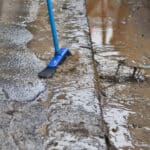Learn how the water damage restoration process works, step by step. Find out what to expect from start to finish, including cleanup, drying, and repairs.
Introduction
Water damage can happen unexpectedly, whether from a burst pipe, heavy rain, or a leaking appliance. Understanding the water damage restoration process helps homeowners know what to expect when seeking professional services. This step-by-step guide explains how experts restore your property to its original condition.
1. Emergency Contact and Inspection
The first step is to contact a water damage restoration company. Many companies offer 24/7 emergency services to respond quickly. Once they arrive, professionals assess the damage by inspecting the affected areas. They use advanced tools like moisture detectors and infrared cameras to detect hidden water pockets.
2. Water Removal
After inspection, the next step is water extraction. High-powered pumps and vacuums remove standing water from floors, carpets, and other surfaces. This step is crucial to prevent further damage and reduce the risk of mold growth. The faster water is removed, the better the outcome.
3. Drying and Dehumidification
Once the visible water is removed, the affected areas need to be dried. Industrial-grade air movers and dehumidifiers help remove moisture from walls, floors, and furniture. This step may take several days, depending on the extent of the water damage. Professionals regularly monitor moisture levels to ensure everything is completely dry.
4. Cleaning and Sanitizing
Water damage can leave behind bacteria, mold, and unpleasant odors. Restoration experts clean and sanitize all affected items using specialized cleaning products. Carpets, upholstery, and personal belongings are disinfected to eliminate harmful bacteria. Odor removal services also help restore a fresh environment.
5. Mold Prevention
Mold can start growing within 24-48 hours of water exposure. Restoration companies apply antimicrobial treatments to prevent mold growth. If mold is already present, they perform mold remediation to remove it safely.
6. Restoration and Repairs
The final step is restoring the property to its pre-damage condition. This may include minor repairs like drywall replacement, painting, or carpet installation. For severe damage, major renovations such as rebuilding entire sections of the property may be required. The goal is to make your home or business look like it was never damaged.
Why Choose Professional Water Damage Restoration Services?
Hiring professional water damage restoration services ensures the job is done efficiently and safely. Certified technicians have the knowledge, equipment, and experience to handle all types of water damage. They help minimize losses, prevent mold, and restore your property faster.
Conclusion
Water damage can be stressful, but understanding the water damage restoration process makes the situation easier to manage. Professional services follow a systematic approach to restore your property quickly and effectively. If you experience water damage, contact a reliable water damage restoration company for immediate assistance.




